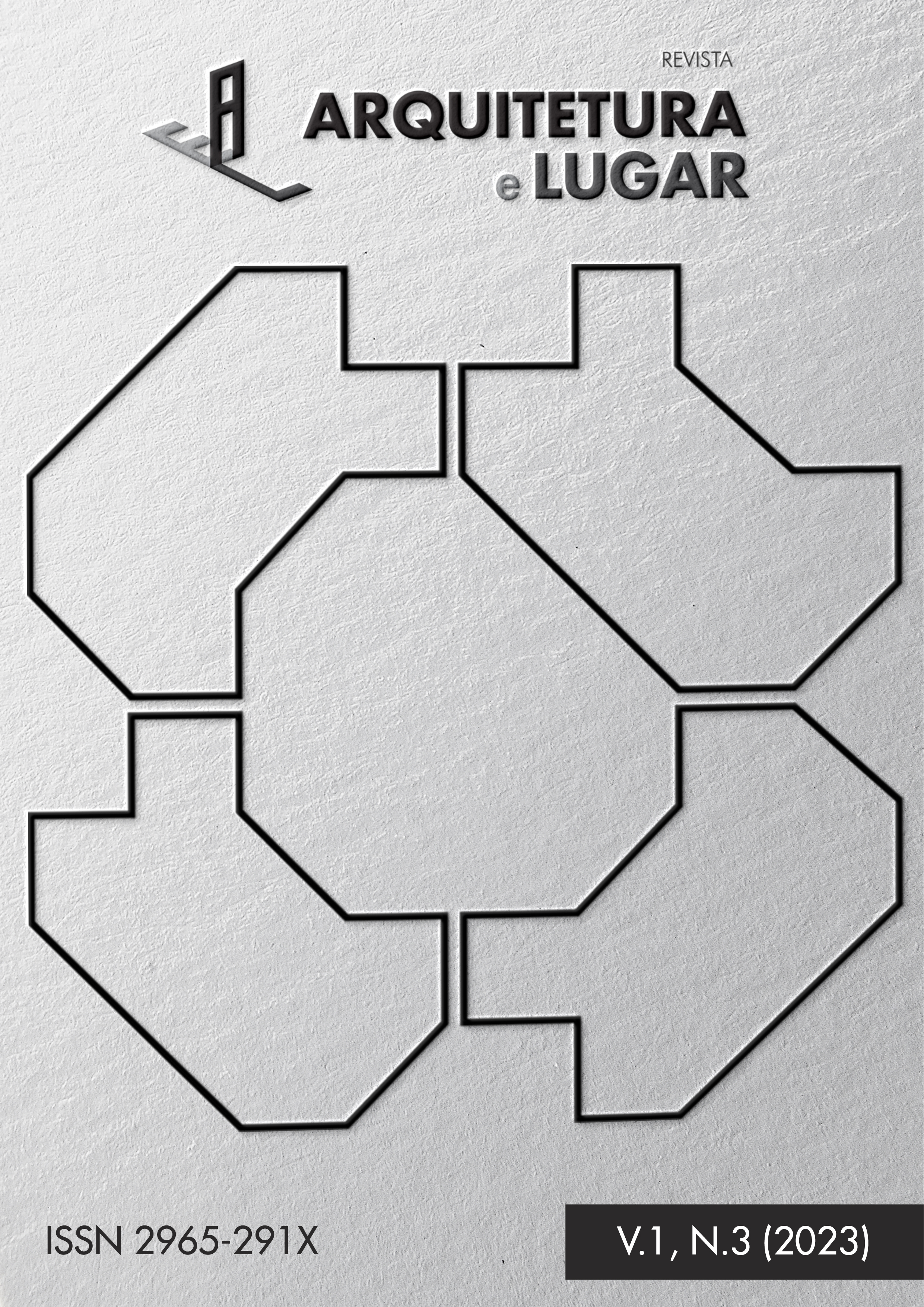A FERROVIA MADEIRA MAMORÉ E A CIDADE DE PORTO VELHO-RONDÔNIA
SÍMBOLOS DE MODERNIDADE EM TERRITÓRIOS DE PODER
Palavras-chave:
ferrovia, modernidade, arquitetura amazônicaResumo
Este artigo faz uma abordagem sobre o “surto de modernidade” vivenciado na cidade de Porto Velho, em Rondônia, a partir de sua instalação no início do século passado, para abrigar a estação inicial da Estrada de Ferro Madeira Mamoré, até a fase de nacionalização da ferrovia nos anos 40. Escolhemos esse recorte espaço temporal por entendermos que em nenhum outro momento a cidade tenha vivenciado essa experiência do moderno com tanta ênfase como nos seus primeiros anos de existência. Porto Velho, sendo a capital praticamente isolada em uma rede local de cidades ainda bastante embrionárias, se caracteriza como vitrine principal dos acontecimentos que configuraram essa formação; a produção arquitetônica na cidade em seus primórdios revela essa efervescência da modernidade vivenciada no país como um todo. A relação com os vários momentos do funcionamento da ferrovia e suas administrações cristaliza-se tanto nos prédios arquitetônicos como no conjunto urbano que os abriga, colocando aquela pequena cidade amazônica em posição de vanguarda, em sua modernidade no começo do século XX.
Downloads
Referências
BARREIROS SILVA. A.C.L. O Centro Histórico de Porto Velho-Rondônia. Patrimônio (In) Visível da Cidade. Pequenas Concessões ao Passado. Tese (Doutorado em Geografia). Programa de Pós Graduação em Geografia, Universidade Federal Fluminense, Niterói, 2015.
BECKER, B. Amazônia. Série Princípios: Editora Ática, 1990.
BORZACOV, Y. Porto Velho. 100 anos de História. Porto Velho, 2007.
CANTANHEDE, A. Achegas para a História de Porto Velho. Porto Velho,1950.
CORREIA, T.B. De Vila Operária a Cidade Companhia. Revista Brasileira de Estudos Urbanos e Regionais, volume 4, 2001, pg. 83-98.
FERREIRA, M. R. A Ferrovia do Diabo. São Paulo: Edições Melhoramentos, 1959.
FONSECA, D. R. Uma Cidade à Far West: Tradição e Modernidade na Origem de Porto Velho. In: Porto Velho Conta Sua História. Semce, Porto Velho,1998.
GAULD, C.A. Farquhar. O Último Titã. Um Empreendedor Americano na América Latina. São Paulo: Editora de Cultura, 2006.
HARDMAN, F. F. Trem Fantasma. A Modernidade na Selva. São Paulo: Companhia das Letras, 1988.
LIMA, S. R. Capital Transnacional, Company Town e a Produção do Espaço Urbano. Caminhos de Geografia-Revista online. Acesso em 2/12/2010.
MENEZES, E. P. Retalhos para a História de Rondônia. Imprensa Oficial do Estado do Amazonas, 1980.
NASCIMENTO, C. P. Cenários da Produção Espacial Urbana de Porto Velho. Dissertação (Mestrado). Programa de Pós-Graduação em Geografia, Universidade Federal de Rondônia, 2009.
NEELEMAN, R. e NEELEMAN, G.Trilhos na Selva. O Dia a Dia dos Trabalhadores da Ferrovia Madeira-Mamoré. São Paulo: BEI Comunicação, 2011.
NOGUEIRA, J. Estrada de Ferro Madeira Mamoré. Rio de Janeiro, SPVEA, 1959.
NOGUEIRA, M. G. C. A construção do espaço social em Porto Velho na primeira metade do século XX: Um olhar através da fotografia. Dissertação (Mestrado), Universidade Federal de Rondônia, 2008.
SANTOS, M. Organização do Espaço e Organização Social: O Caso de Rondônia. Boletim Carioca de Geografia. AGB, Rio de Janeiro, 1982.
SOUZA, M. Mad Maria. Rio de Janeiro: Ed. Marco Zero. 1985.
TEIXEIRA, M. A. D. e FONSECA, D. R. História Regional (Rondônia). Rondoniana: Porto Velho, 2003.
Downloads
Publicado
Como Citar
Edição
Seção
Licença
Copyright (c) 2023 Revista Arquitetura e Lugar

Este trabalho está licenciado sob uma licença Creative Commons Attribution-NonCommercial-NoDerivatives 4.0 International License.
Autores que publicam nesta revista concordam com os seguintes termos:
1. Autores mantém os direitos autorais e concedem à revista o direito de primeira publicação, com o trabalho simultaneamente licenciado sob a Licença Creative Commons Attribution-NonCommercial-NoDerivatives 4.0 que permite o compartilhamento do trabalho com reconhecimento da autoria e publicação inicial nesta revista;
2. Autores têm autorização para assumir contratos adicionais separadamente, para distribuição não-exclusiva da versão do trabalho publicada nesta revista (ex.: publicar em repositório institucional ou como capítulo de livro), com reconhecimento de autoria e publicação inicial nesta revista;
3. Autores têm permissão e são estimulados a publicar e distribuir seu trabalho online (ex.: em repositórios institucionais ou na sua página pessoal) desde que concluído o processo editorial, já que isso pode gerar alterações produtivas, bem como aumentar o impacto e a citação do trabalho publicado (Veja O Efeito do Acesso Livre);
4. Não recomenda-se publicação e distribuição do artigo antes de sua publicação, pois isso poderá interferir na sua avaliação cega pelos pares.




